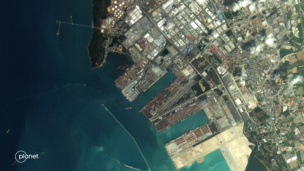Yesterday, SF-based Astranis announced that it won a Space Force contract worth up to $10.5M to build resilient and jam-resistant waveform technology into its MicroGEO broadband birds.
The Phase III Small Business Innovation Research (SBIR) award includes $4.5M for Astranis to incorporate Protected Tactical Waveform technology into its software-defined radio payloads, along with a $6M option for an on-orbit demonstration.
“If you go look at what we have today, we’re basically dependent on a pretty small number of these very large GEO satellites for military communications,” Astranis CEO John Gedmark told Payload. “What we thought that we could add to the mix is a much larger number of smaller satellites that then would add a lot of resiliency to the overall architecture.”
Distributed and software-defined
Each of Astranis’ MicroGEO satellites are 1/20 the size and 1/10 the cost of a traditional GEO satellite. These smaller, distributed satellites are more difficult for adversaries to target.
Each Astranis satellite is equipped with a software-defined radio payload, which Gedmark says increases both performance, increasing the number of bits that can be processed per satellite, as well as flexibility, by allowing operators to pick and choose which frequency bands they’re in.
“Because we have designed such high performance software-defined radio into the satellites from day one, we can do this on the hardware that we’re already building out of the box,” Gedmark said. “It’s just a software update. And that’s a huge improvement over what the US military has gotten before out of commercial satellite providers.”
This contract came about quickly. Lt. Gen. Michael Guetlein visited Astranis’ facility in SF and had the company on contract less than six weeks later.
On the manifest: Astranis has five satellites slated to launch this year. The first, Arcturus, is riding as a secondary payload on the Viasat-3 Falcon Heavy mission, which is tracking to launch in early- to mid-April. The other four birds will fly on a dedicated Falcon 9 mission this summer.
Up next: Looking ahead to 2024, Astranis is ramping up its manufacturing capabilities and continuing to hammer out details with potential customers. “We’re spooling up our satellite manufacturing facility to be capable of doing two satellites per month, or 24 satellites per year,” said Gedmark. “So the launch rate is only going to increase as we go along, and we’re targeting 100 of our satellites in orbit by 2030.”




